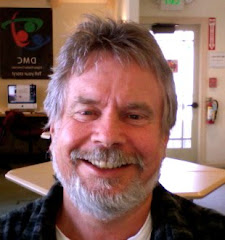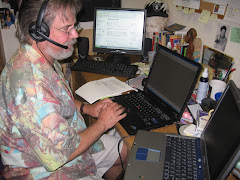In the Fulbright writing class this summer, we used the splendidly creative and thorough activity designed by one of the curriculum teams in the spring semester, specifically for this population. The focus was genre and the materials were nine short texts all related to the topic of volcanoes. They included a newspaper report about the Iceland eruption, scientific articles about various features of volcanoes, a poem, a proposal for a science lesson, a blog post and a passage from a novel. They ranged across a wide expanse of formality levels.
The students worked in pairs to identify the source of each text and were remarkably accurate in their estimations. But the linguistic sparks really began to fly when I asked them about the features of each text which provided clues: the passive voice in the science journal article; the short paragraphs and direct quotes in the news paper; the imperatives in the recipe; the sentence fragments and use of the word “jeez” in the blog post; the alliteration and enjambment in the poem; the evocation of place in the novel; the citations in the biogeography article.
The crucial role of induction, the value of authentic texts, the power of contrast. Nine texts and a whole set of insights into genre and their distinguishing linguistic features. Awesome.
Wednesday, October 13, 2010
Summit of Awesome
Here’s a coincidence that I did not immediately notice, but later became mildly obsessed with: our great friend Eve, fatigued with the cold Oregon winter and long, wet spring, decided with huge conviction that 2010 would be the Summer of Awesome. At the time of this announcement, we were visiting Eve and other Portland friends; we were staying a few blocks away from her house at the Kennedy School, a unique hotel in an old elementary school.
Now it’s important to emphasise that this building struck forcibly in the gut of my long term memory. The style was highly evocative of the schools I attended as a boy: high ceilings, long corridors, lots of wood paneling, neatly printed signs. The conversion to a hotel was done with great creativity, style and humour: our room had a blackboard and an old desk; they have squeezed in a small pool, a restaurant, three or four bars, including one in the old boiler room; and the old school labels co-exist with the hotel signage.
There is also a large room, a place of assembly. At the time of our visit, it hosted a gathering, announced and promoted in a number of cute signs as The Summit of Awesome. The doors were normally ajar and glances inside revealed groups of participants eagerly collaborating on various projects. A sense of fun and committed activity prevailed, leaking through the doors in snatches of intense conversation and squeals of delighted laughter.
For a day or two, it somehow seemed wrong. This school/hotel was much too redolent of my difficult and sour experiences of primary and secondary education to be hosting something light and entertaining. Gradually, however, this impression faded, to be replaced by three intriguing insights. The first, that anyone (but especially Eva) can make a season awesome simply by declaration – such is the power of words. The second, that events both fun and awesome can take place in a school setting. The third, that the word summit neatly connotes both height (of achievement) and collaboration (the word meeting being these days almost always elided).
And all three, I think, can be applied to a semester-long graduate course in language education.
I have therefore renamed my fall class, Principles and Practices of Language Education, as THE SUMMIT OF AWESOME – with the intention of starting the process of making it a memorable and enjoyable experience, a meeting of minds and spirits which transcends any limitations which the classroom setting can imply.
Now it’s important to emphasise that this building struck forcibly in the gut of my long term memory. The style was highly evocative of the schools I attended as a boy: high ceilings, long corridors, lots of wood paneling, neatly printed signs. The conversion to a hotel was done with great creativity, style and humour: our room had a blackboard and an old desk; they have squeezed in a small pool, a restaurant, three or four bars, including one in the old boiler room; and the old school labels co-exist with the hotel signage.
There is also a large room, a place of assembly. At the time of our visit, it hosted a gathering, announced and promoted in a number of cute signs as The Summit of Awesome. The doors were normally ajar and glances inside revealed groups of participants eagerly collaborating on various projects. A sense of fun and committed activity prevailed, leaking through the doors in snatches of intense conversation and squeals of delighted laughter.
For a day or two, it somehow seemed wrong. This school/hotel was much too redolent of my difficult and sour experiences of primary and secondary education to be hosting something light and entertaining. Gradually, however, this impression faded, to be replaced by three intriguing insights. The first, that anyone (but especially Eva) can make a season awesome simply by declaration – such is the power of words. The second, that events both fun and awesome can take place in a school setting. The third, that the word summit neatly connotes both height (of achievement) and collaboration (the word meeting being these days almost always elided).
And all three, I think, can be applied to a semester-long graduate course in language education.
I have therefore renamed my fall class, Principles and Practices of Language Education, as THE SUMMIT OF AWESOME – with the intention of starting the process of making it a memorable and enjoyable experience, a meeting of minds and spirits which transcends any limitations which the classroom setting can imply.
Subscribe to:
Comments (Atom)





